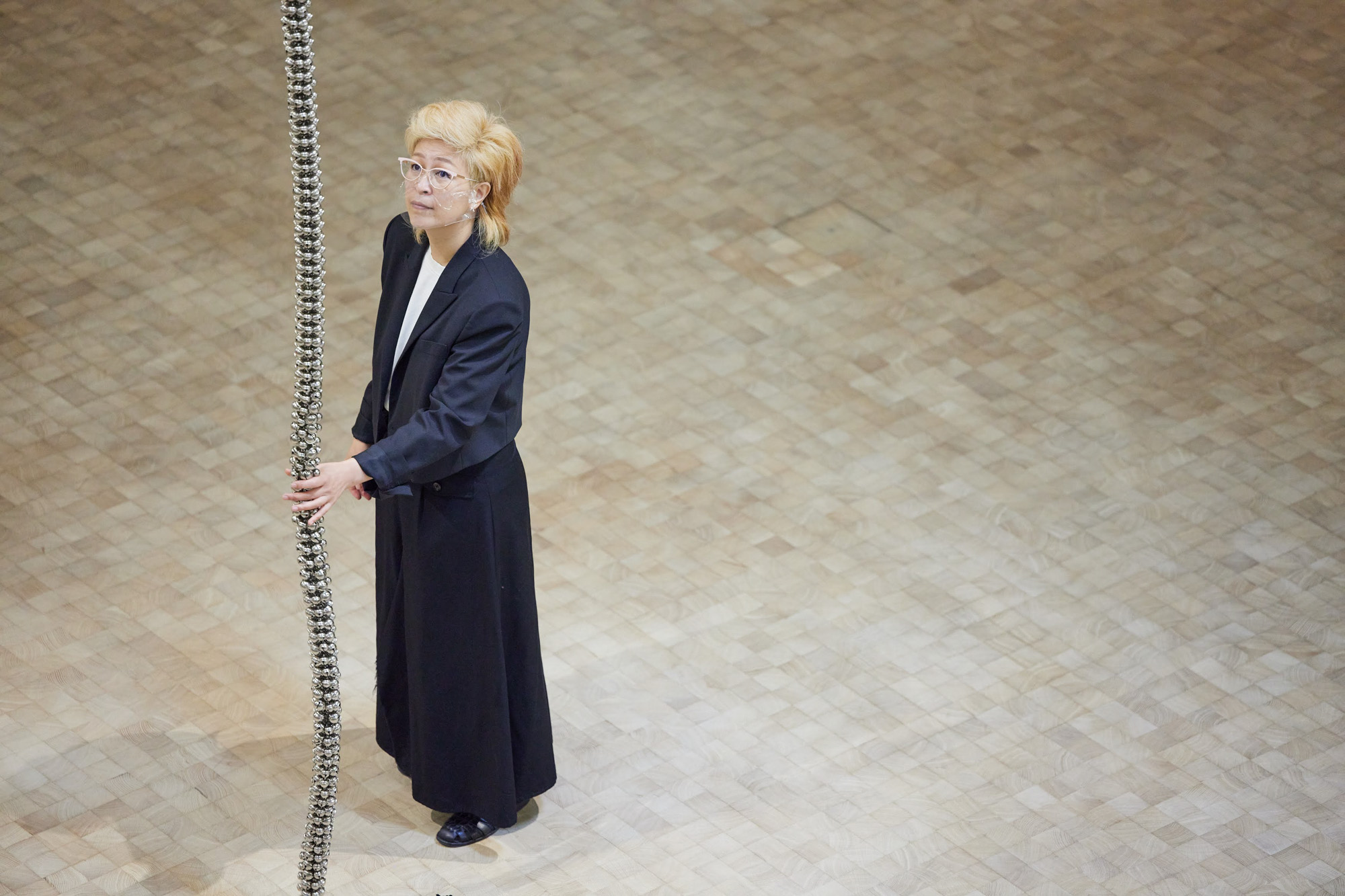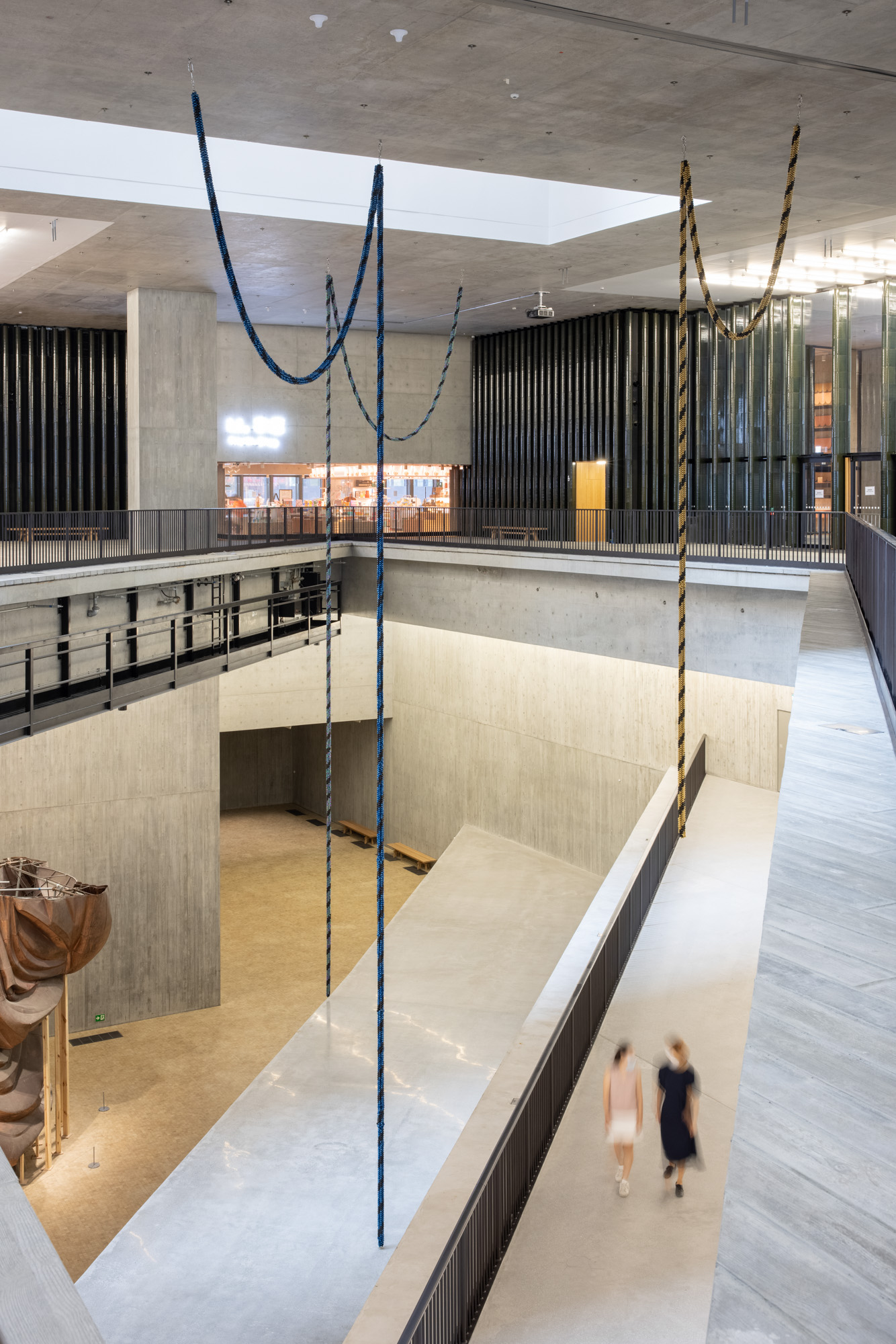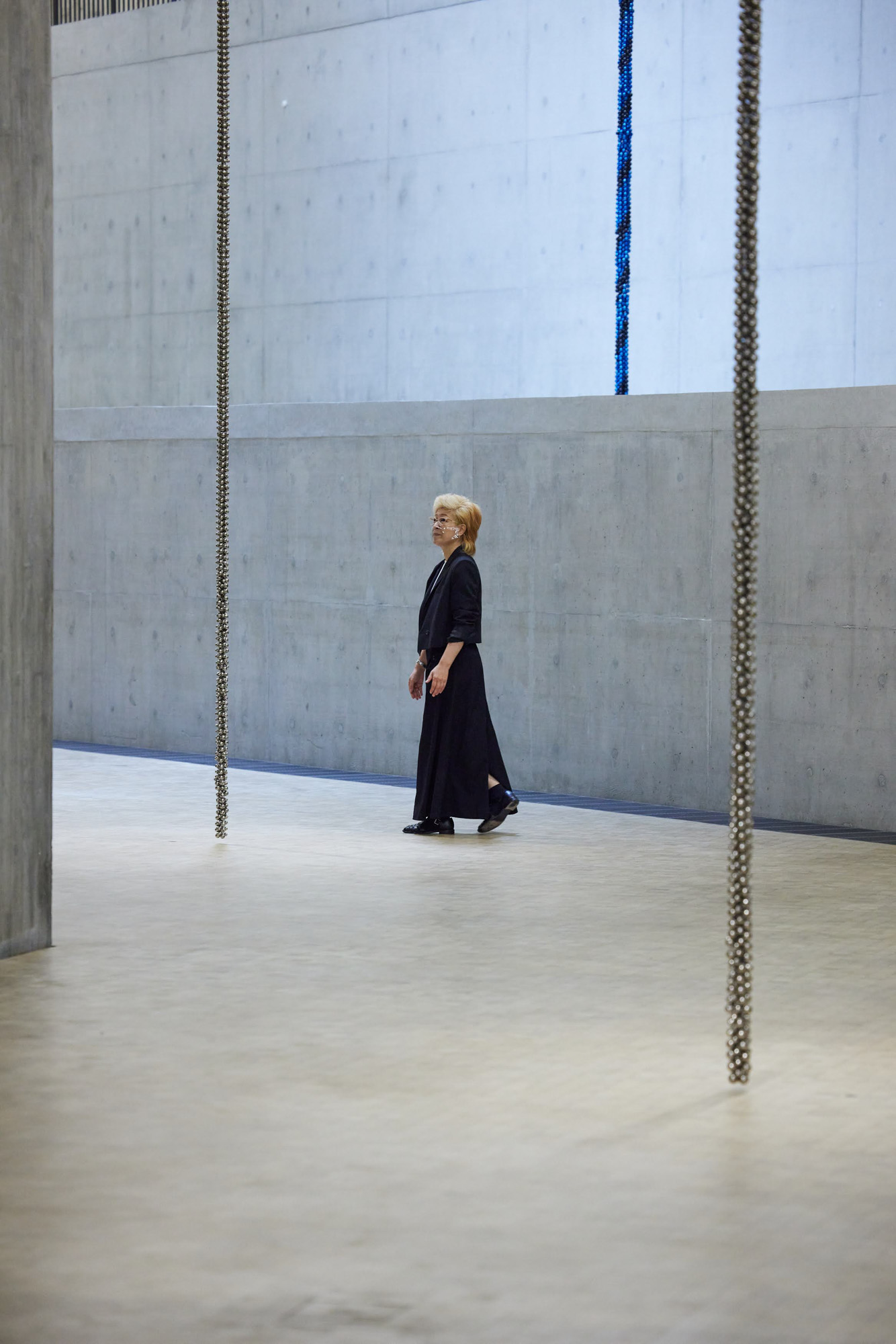Shows
Haegue Yang’s “Sonic Rescue Ropes”


During the opening night in November 2021 of M+, the new museum of visual culture in Hong Kong, Sonic Rescue Ropes (2021–22), a commissioned work by South Korean artist Haegue Yang, was activated for the first time. The slim silver ropes made from thousands of tiny bells filled the cavernous atrium and lobby spaces with a monotone jingle that echoed upwards from the institution’s lower level, punctuating the commotion of the evening.
The austere original 2021 iteration of the installation consisted of four ropes that hung from the lobby ceiling to the lower level that M+ calls the Found Space. In May 2022, four “chunkier” (the artist’s word choice) ropes were installed in the groundfloor lobby and down in the Found Space. These new additions, which alternated black-coated bells with stripes of color, added pops of yellow, blue, or an opalescent violet to the otherwise brutalist space characterized by its grayscale interior. For most of the day they were inert. But when these strands were activated by M+ team members—myself included, as part of my prior responsibilities working at the museum—it demonstrated that these ropes were not just static art objects, but rather part of a performance unique to each facilitator. The sound drew attention from curious onlookers (and sometimes overly eager, unauthorized “participants”) who would wonder aloud about the meaning of the work.

As a sculptor drawn to everyday, traditionally “non-art” materials including yarn, laundry racks, lamps, and venetian blinds, bells first caught Yang’s eye at a hobby shop. Yang has since incorporated bells into her mobile sculptures starting in 2013 with series called Sonic Dances and Sonic Rotating Lines, which blend references to iconic modern dance performances, household objects, and Korean shamanic rituals. She began installing strands of custom-fabricated bells from the ceiling in a 2020 exhibition at the Museum of Modern and Contemporary Art in Seoul.
As Yang explained when we met in August at M+, her original conception for Sonic Rescue Ropes was inspired by her reflections on the idea of Eurasia, which she had been reading about at the time of the ropes’ conception. For Yang herself, who has been based between Germany and South Korea for most of her professional career, the subject has a great deal of personal resonance. For her, thinking about Eurasia also helps bridge the oft-used and cliché dichotomy of East and West that strips away many of the interesting aspects of the wider region, revealing what she called the “problem of horizontalness as a metaphor.” To that end, as an artist who works with forms of abstraction, the vertical orientation of the work opposes the East/West dichotomy and points to the depths and layers of the concept of Eurasia as it traversed multiple floors.

Yang’s exploration of the idea of Eurasia was most evident when she spoke about the Korean folkloric inspiration for the work, the tale “Sister Sun and Brother Moon,” which tells of two siblings who escape from a tiger with a metal rope sent from the heavens; they then become the titular sun and moon. But as the artist explained: “It is not a just a single reference. In folktales from different cultural spaces, there is this idea of something growing from the bottom or dropped down from the top that changes the [characters’] destiny, and the whole dynamic of the narrative.” But rather ominously, Yang emphasized that in various folktales the force behind the ropes are “not always a good spirit; there are some that are a bit monstrous.”
Although the artist did not explain exactly what her definition of Eurasia was, one gets the sense that it is not about what it is, but rather what it is not—in this case, it is not East versus West, or one culture compared to another. Just as the vertical axis of the artwork is not meant to literally represent Heaven and Earth as it might in the folkloric context but instead points to “the layers of what is happening in between,” Yang’s work is not defined by polarity.
Additionally, Yang wanted the work to fill the “void” of the multistory opening that cuts through the core of the building. Reflecting on finally seeing the installation in person, Yang compared the ropes to a fishing line cast in the ocean that is the sheer amount of cubic space in the museum’s Found Space. For her, the “thin line makes the whole void graspable . . . [and] becomes more measurable, relatable.”
The image Yang conjures is one so vivid—the multiple metal ropes piercing through the heart of the building and filling the void physically and sonically with the single note of the bells’ choral chimes. The existential dread from Yang’s almost purgatorial description of the installation of Sonic Rescue Ropes—which defy the polarities of good/evil, East/West, Heaven/Earth—adds to the grandeur of the work as something that draws your attention to how small your physical existence is (and perhaps also to the large scale of the museum) and how to orient your place in the void, or the world.

Haegue Yang’s Sonic Rescue Ropes were on view at M+, Hong Kong, from November 12 to August 24, 2022.
Tiffany Luk is ArtAsiaPacific’s associate editor.







